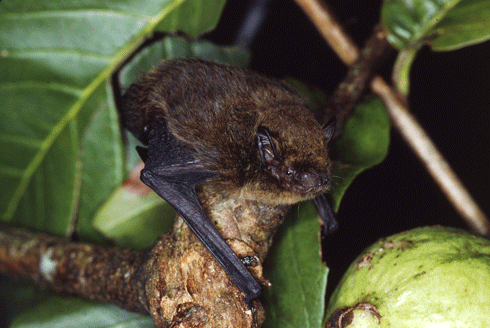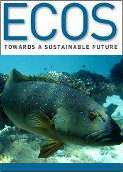
|
Published: 4 June 2012
Lessons to be learnt from loss of the pipistrelle
A recent paper in the journal Conservation Letters alleges that failure to act quickly on evidence of rapid population decline has led to the first mammal extinction in Australia in the last 50 years, the Christmas Island pipistrelle bat (Pipistrellus murrayi).

|
|
The Christmas Island pipistrelle, now extinct. Credit: Lindy Lumsden
|
Since 26 August 2009, there have been no recordings of the echolocation call of the tiny bat, which is native to Christmas Island. It is now presumed extinct.
In a recently published paper in Conservation Letters, scientists analysed the conservation decision making process associated with the decline of this species and concluded that it illustrated the need for strong leadership on extinction issues.
Among the chain of events analysed was a February 2009 report by Dr Lindy Lumsden – Principal Research Scientist with the Arthur Rylah Institute for Environmental Research, and foremost authority on this species – warning that only 20 bats remained on Christmas Island. Government funding was then allocated to establish a captive breeding program, but that proved too little, too late.
The Christmas Island pipistrelle fed on insects and roosted in tree hollows and decaying vegetation. Just a few decades ago, the bat was widespread on Christmas Island and roosted in groups of 50 or so animals.
‘It is estimated that a single pipistrelle consumes its body weight in insects per night,’ lead author Tara Martin, of CSIRO’s Ecosystem Services, told the conservation website Mongabay.
‘While the loss of the pipistrelle is likely to lead to more insects, it is too early to tell what the long term ecological impact of this will be on the island.’
Scientists are unsure as to what pushed the bat to extinction. It is possible that a combination of stressors was responsible, including invasive animals such as feral cats, the common wolf snake, and a recent invasion of yellow crazy ants. Disease is another possibility, though researchers could find no sign of the bats suffering from illness.
In the end ‘a lack of brave decision making in the face of uncertainty, and a lack of accountability for stalling decisions contributed to the loss of the pipistrelle,’ Dr Martin told Mongabay.
‘Monitoring [of endangered species] must be linked to decisions, institutions must be accountable for these decisions and decisions to act must be made before critical opportunities, and species, are lost forever’.
According to Dr Martin and her co-authors the lessons learnt with the extinction of the pipistrelle are relevant to the wider effort to stem the loss of global biodiversity.
Source: adapted from the Mongabay story ‘Island bat goes extinct after Australian officials hesitate’, by Jeremy Hance, published 23 May 2012.
More information
‘Island on the edge’



